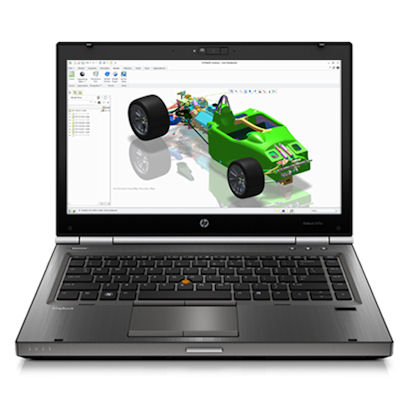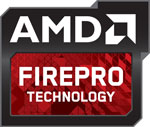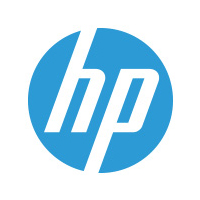White Paper: See More and Do More with AMD Eyefinity Multi-Display Technology
Latest News
July 9, 2013
Gone are the days when multiple display screens were solely for financial types, medical researchers, oil & gas people, and similar multitaskers who needed to interact with a bunch of applications simultaneously or required a large, immersive display. Today, multiple display set-ups are increasingly found where design engineers, programmers, and other engineers toggle their focus between CAD, CAE, CAM, visualization, social media, office, and enterprise applications in graphics-intensive, fast-paced environments.
 |
Why is this a trend? Well, it’s true that high-quality LCD monitors are becoming less expensive and working in an immersive environment is as productive as it is cool. But the real keys are that multi-display technology has become technologically practical with today’s powerful workstations equipped with modern GPUs (graphics processing units) and that the productivity potential is too great to be ignored.
“See More and Do More with AMD Eyefinity Multi-Display Technology” is an 11-page PDF that makes a strong case in favor of multi-display work environments. It has two discrete parts. The first is the benefits case for a multi-display set-up. This discussion actually bookends the second part, which comprises an easy-to-grasp discussion of AMD’s Eyefinity technology for handling multi-display deployments as well as a brief tour of user options and some key specifications.
This paper starts fast by laying out the potential benefits of a multi-display set-up for engineers. AMD Eyefinity technology enables you to run up to six displays off a single graphics card with a single GPU, whereas earlier technologies deployed multiple cards and GPUs. But, on the practicality front, you can begin your relationship with AMD Eyefinity using a single card and a single monitor, then expand to a second or third monitor as your budget permits.
Each screen can operate independently or all can display the same image simultaneously. So, with the latter you can immerse yourself right into, say, your NX assembly. With the former, you can have NX, Excel, videos, FEA, and whatever else you need running on different displays. Like real estate investing, it’s all about location, location, location. What do you want on-screen where?
The paper turns just as quickly to a technology-focused presentation. It explains how you can configure displays for your workspace—say three landscape or portrait displays side-by-side or stacked. It covers options such as creating an integrated display surface or creating multiple 3D displays with independent resolutions, refresh rates, and rotation settings. It also covers practical matters like connecting cables.
 The specs are interesting. What’s catchy here are the resolution numbers. Example: A 4800 x 2560 resolution grouping consisting of three displays wide and one high with portrait orientation using a 2560 x 1600 display resolution for each monitor results in a total resolution of 12.3 megapixels. That is, a big, really nice picture.
The specs are interesting. What’s catchy here are the resolution numbers. Example: A 4800 x 2560 resolution grouping consisting of three displays wide and one high with portrait orientation using a 2560 x 1600 display resolution for each monitor results in a total resolution of 12.3 megapixels. That is, a big, really nice picture.
The paper wraps where it began with a view of the benefits that multi-display technology holds, but this time it’s for individual industries, such as manufacturing design, medical, and digital content creation. As an aside, the paper does not go into the ever-changing details about certified drivers for the newest version of applications like CATIA, and HyperWorks, and PTC Creo, but you can find that data on the AMD Eyefinity web page.

![]() Another discussion that the paper does not get into is about workstations that leverage AMD Eyefinity technology. For example, the HP EliteBook 8470w Mobile Workstation—pictured up there in the HTML version of this message—comes with the AMD FirePro M2000 graphics card. AMD Eyefinity Technology in this card enables the HP EliteBook 8470w to support up to five displays, including its native 14.1-in. HD display, simultaneously. While getting into workstations with AMD Eyefinity support potentially could have been an interesting side discussion, it’s probably best that it was avoided. Like with applications, things change too quickly to keep a paper like this up to date and current information is readily available online.
Another discussion that the paper does not get into is about workstations that leverage AMD Eyefinity technology. For example, the HP EliteBook 8470w Mobile Workstation—pictured up there in the HTML version of this message—comes with the AMD FirePro M2000 graphics card. AMD Eyefinity Technology in this card enables the HP EliteBook 8470w to support up to five displays, including its native 14.1-in. HD display, simultaneously. While getting into workstations with AMD Eyefinity support potentially could have been an interesting side discussion, it’s probably best that it was avoided. Like with applications, things change too quickly to keep a paper like this up to date and current information is readily available online.
All in all, “See More and Do More with AMD Eyefinity Multi-Display Technology” is a thought provoking and quick read. AMD did a good job covering the informational needs of those considering one of its series of professional-level graphics cards and wondering what relevance AMD Eyefinity technology has in it for them. The logic for implementing multi-display technology in an engineering work environment seems straightforward to me, but you should decide that for yourself. Hit the link over there, download this complimentary white paper, and see if you arrive at a similar conclusion.
Thanks, Pal. – Lockwood
Anthony J. Lockwood
Editor at Large, Desktop Engineering
White Paper: See More and Do More with AMD Eyefinity Multi-Display Technology
Subscribe to our FREE magazine, FREE email newsletters or both!
Latest News
About the Author
Anthony J. Lockwood is Digital Engineering’s founding editor. He is now retired. Contact him via [email protected].
Follow DE





